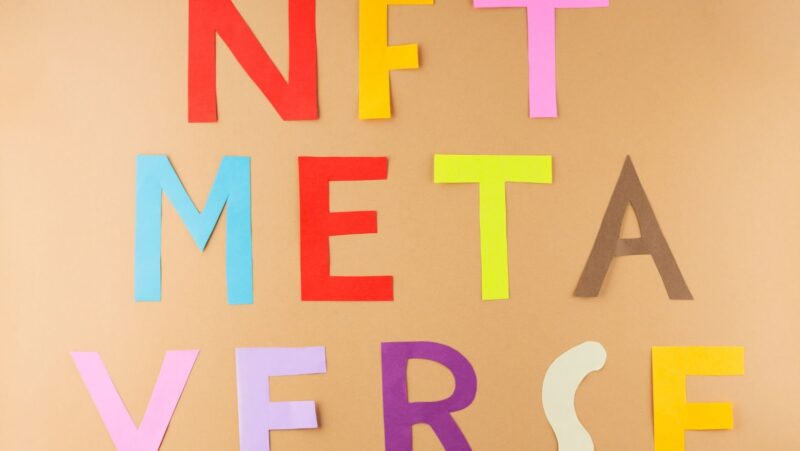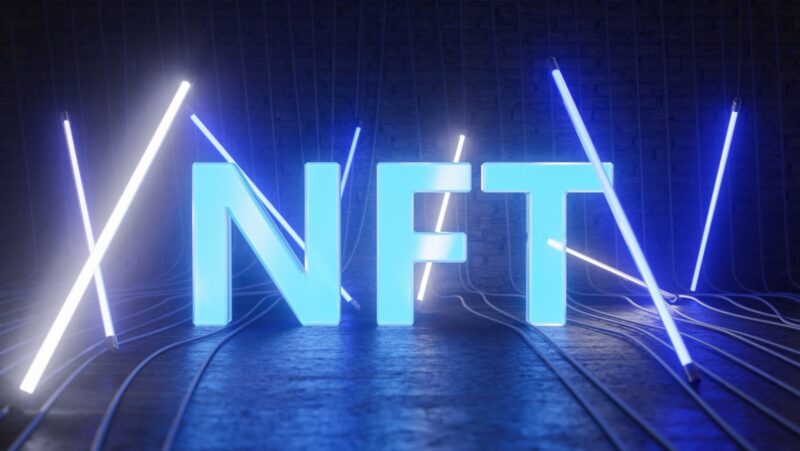
New Year’s Letter Discusses NFTs, Metaverse, Blockchain, And More
2021 arrived with a bang, as New Year’s Letters were released to discuss the rise of Non-fungible tokens (NFTs) in the gaming industry.
NFTs are a form of digital asset, such as art or collectibles, that are stored on a blockchain and can be bought, sold, or traded for real monetary value. The potential of NFTs and the Metaverse, a 3D virtual world, are revolutionary and could change the landscape of gaming forever.
This article will explore the challenges to widespread use of NFTs in games.
Definition of NFTs
Non-fungible tokens (NFTs) are a type of digital asset on a blockchain, where each unit is unique and not interchangeable. In the emerging metaverse, they often represent virtual or physical items within games and virtual worlds. This can include everything from digital art and collectibles to virtual land and gaming assets. NFTs are essentially tokens on a blockchain representing something else—something traditional cryptocurrencies like Bitcoin could not represent.
In simple terms, an NFT is a type of digital asset with its market value, is scarce, verifiable, and does not rust over time—unlike physical assets such as gold or silver. It also cannot be counterfeited or duplicated like digital assets like music or movies can be. An example of an NFT would be digital art pieces on Ethereum that can only be bought with cryptocurrency like Ether; once purchased they cannot be sold on any other platform than the one they were purchased on.
NFTs make it possible to store important information about items in the metaverse – such as ownership rights – using secure encryption techniques so users will always know who owns what item. This technology offers game developers the potential for creating game economies where players can own, trade, and monetize their gaming experiences with true ownership and scarcity of those experiences captured forever in a publicly verifiable fashion.
Overview of the Metaverse
The Metaverse is a shared, virtual space that provides users with a persistent and immersive experience. It is interconnected to allow virtual worlds to exist and interact with one another, providing a three-dimensional environment in which users can create avatars and objects.
The Metaverse includes several unique features such as its tradeable currency system, platforms for digital content creation, decentralized analytics and data services, secure identity frameworks, relationships between objects in permastructures along roads leading from the physical world into the virtual one. In addition, the technology of the Metaverse makes possible for identity verification through decentralized blockchains that provide token-based economic incentives for data exchange.
NFTs (non-fungible tokens) provide incentives for creation in the Metaverse and trustless trading between parties. This type of blockchain-based asset is being used more actively in gaming than anywhere else, becoming an attractive way to combine user ownership with tradability – promoters of this technology believe it could lead to tremendous growth potential within the gaming industry due its ability to establish both new revenue streams and connection among gamers in exchanges outside physical markets or services controlled by third party intermediaries.
Though NFTs have yet to truly achieve mass market adoption within gaming – due partially to lack of infrastructure supports and legal challenges – these tokens represent significant innovation across multiple sectors that could take off at any moment – especially if given attention or support from traditional industries outside the realm of blockchain. Additionally, such collaborations could help extend NFT usage into new applications and greater acceptance among consumers unfamiliar with virtual currencies, enabling broader adoption within gaming markets worldwide this year!
Benefits of Blockchain Technology
Introducing blockchain technology to the gaming market has opened up several potential advantages for game developers and gamers alike. By leveraging distributed ledgers, game developers can create persistent virtual economies that span multiple platforms and ecosystems, introducing more liquidity to the gaming market. In addition, blockchain-based networks also enable more secure transactions between players and developers, reducing the risk of fraud or other illegitimate activity.
One of the most promising areas for integrating blockchain technology into gaming is Non-Fungible Tokens (NFTs). NFTs are digital assets on a blockchain network and represent ownership of virtual goods or in-game items. With NFTs, developers can create unique digital objects that gamers can collect and trade like physical property. This creates new opportunities for diversifying in-game economies, as NFTs facilitate secure purchases between players and allow developers to sell rare virtual goods at a premium price point, increasing monetization opportunities within their games.
Furthermore, NFTs unlock new possibilities such as breeding unique digital creatures or trading properties within massive multiplayer online (MMO) worlds powered by decentralized organizations like Decentraland’s Metaverse. For example, players could purchase an empty plot within a Metaverse subdivision with their own NFT keys and then build out their custom cornerstones in this open world using tools designed for constructing different component pieces for buildings or even entire towns. This also opens up further potential use cases with applications such as staking tokens to buy land from others in exchange for goods.
Challenges to Widespread Use of NFTs
Non-fungible tokens, or NFTs, are a relatively new way of digital asset ownership on the blockchain. NFTs are unique, digital assets, and can be used for digital gaming in the Metaverse and for digital art, music, and more.
While NFTs promise to revolutionise digital ownership, their widespread use in gaming still faces some challenges, which we will discuss in this article.
Lack of Regulation
The lack of adequate regulations and standards for the use of NFTs presents a major challenge to their widespread adoption. Currently, there is no clear set of laws governing the digital assets, making it difficult for developers to implement them in games and other products. Additionally, due to the lack of regulation, major security risks are associated with the misuse or stealing of NFTs.
To address this issue, some jurisdictions have introduced legislative measures or drafted documents to lay out rules for blockchain-based assets, including NFTs. These include documents such as The European Union Blockchain Declaration adopted by eight EU nations in 2018 and Virtual Asset Service Providers Act passed in New York during 2019. However, these documents are largely non-binding and do not offer comprehensive protection from fraudulent activities in the industry regarding NFTs and related digital assets.
Another challenge is token standardization, which is necessary if more developers will incorporate similar token standards into their games. This ensures that certain criteria and conditions are met when creating new tokens on any blockchain platform including compatibility and security issues. Without standardizing these tokens or offering them an accepted foundational level template, developers will continue to be confused about how to create successful projects involving these digital entities.
Furthermore, cryptocurrency regulations can also limit their use effectively if they are not properly balanced with protection from consumer frauds or with meaningful consumer protections that would empower players/users as opposed to limiting their progression and experience within video game worlds/metaverses using NFTs as a form of payment or unlockables within them (e.g., cosmetic perks).
High Transaction Fees
One of the biggest challenges to widespread adoption of non-fungible tokens (NFTs) in gaming is that there can be high transaction fees associated with these digital assets, particularly when they are exchanged on the open market. Transaction fees are charged by a blockchain network to “verify” a given transaction and ensure it is valid. This verification process requires miners, and requires energy, so miners charge fees for their services.
Despite the rising use of NFTs throughout 2021, transaction fees remain somewhat high due to competition for miners’ resources—which could be a barrier to mass adoption. In addition, people have raised concerns about whether NFTs provide enough value to justify this spending level on each transaction;. However, as more people become aware of NFTs and their utility grows, this objection may be quelled in time. Moreover, the next generation of blockchain networks could potentially lower the cost and complexity of creating an NFT or trading them on the open market.
Lack of Scalability
One major challenge that stands in the way of widespread adoption of non-fungible tokens (NFTs) are scalability issues. Even with a network like Ethereum, there is limited capacity for using NFTs on a large scale; their computational requirements can present a bottleneck in creating and displaying complex digital assets and experiences.
Additionally, there is a lack of interoperability standards across different blockchain networks. As a result, businesses and developers are often limited in their ability to easily build across different ecosystems or transfer assets seamlessly, making it difficult for mainstream use cases to be built and explored. Furthermore, the lack of data validation solutions based on blockchain can cause compatibility issues between two blockchains due to data immutability.
The complexity also presents challenges from both a technical and economic perspective. As companies explore electrifying the value chain with NFTs, they must consider the transaction costs associated with their proposed solutions: user identity management, tokenization fees and the various costs involved in smart contract auditing for each platform of which may vary significantly depending on provider ecosystems. Scalability remains an ongoing issue that continues to drive costs up until economies of scale can be achieved through collaboration between providers and stakeholders within each ecosystem.
Security Concerns
Security concerns are the primary issue when deploying NFTs in games. Since NFTs exist on a blockchain, the underlying infrastructure must be secure. This includes secure access to blockchain and full nodes and the prevention of malicious entities from double-spending or stealing assets. Additionally, depending on which distributed integration layer is used, proper protocol implementations such as InterPlanetary File System (IPFS) and Storj also need to be secured.
Another security concern is token issuance: using a trusted source can alleviate some of the inherent risks associated with outsourcing the asset creation process. Many companies provide verified tokens through their systems, but these tokens may need further regulation before they become widely used by mainstream games developers. Finally, many users are concerned about privacy when using an open source shared platform like a blockchain. Possible solutions include privacy-focused protocols like zk-SNARKs and identity services like uPort for personal data protection and management.

Potential Solutions
Despite some of the obstacles preventing the wider adoption of non-fungible tokens (NFTs) in games and the metaverse, there are potential solutions to be found.
In this article, we will discuss the various issues that stand in the way of NFTs becoming more widespread, from high transaction fees to difficulties determining the open market value of NFTs. Along the way, we’ll explore some solutions developers and players can use to overcome these barriers and make NFTs a reality in 2021.
Adoption of Regulatory Framework
The success of NFTs is dependent upon adoption of a regulatory framework that allows their use even in games where it is not already in place. Public sector entities across the globe must take notice of, and regulate the use of NFTs in games to ensure transparency, ethical practices, and consumer safety. In addition, regulatory frameworks must be comprehensive enough to address game integration issues such as token minting, transacting and monetizing procedures.
In addition, regulators should provide clear guidance on permissible uses for NFTs while mandating industry-wide compliance standards that include know your customer protocols and anti-money laundering measures. Regulatory bodies should also consider measures to ensure user protection (e.g., against fraud, collusion or market manipulation) while allowing users to freely access the gaming experience.
Moreover, clear guidelines would create more room for innovation by allowing developers a more predictable ecosystem when creating their projects inside the metaverse gaming world. Therefore, regulatory bodies must prioritize addressing these needs so that everyone can benefit from advances in blockchain technology within game development.
Use of Low Cost Alternatives
One potential solution to the rising cost of Non-Fungible Tokens (NFTs) in gaming is using low-cost alternatives. NFTs are becoming increasingly expensive, with companies such as Atari investing heavily into producing NFT items within their games. Unfortunately, this limiting factor means many people cannot enjoy the fun and use these often sought after digital items. Low cost alternatives include creating new virtual goods such as digital currencies, denominations denominated in fiat (e.g., USD), or game assets that can be bought or sold on platforms like OpenSea, a decentralized marketplace for digital goods. Developers can still create unique and distinctive items using a cheaper option without overspending on expensive NFTs.
Other solutions may involve reducing the number of Ethereum transactions to transfer NFTs or using an alternative blockchain network such as TRON or EOS which currently have lower transaction fees than Ethereum and provide faster transaction completion times. This could reduce costs and attract more users by providing a faster transaction confirmation time without adding extra complexity to the game experience. Finally, marketplaces such as DGaming can engage developers with investors within their platform and expose them to their projects. This could attract even more users due to an increased visibility among gamers seeking alternate investment sources.
Improved Scalability
Increased scalability can help ensure that the blockchain-powered ecosystems that support NFTs can handle larger volumes of transactions and data requests. Furthermore, this improved scalability is critical for the widespread adoption of non-fungible token (NFT) based games and digital assets. These networks must enable quick, seamless exchanges to solidify trust between players, creators, and developers.
Decentralized finance protocols such as Ethereum use blockchains that are limited in transaction throughput by design. As a result, processes such as placing items on a market or handling loot drops depend on current blockchain scalability levels. As the industry matures, new tools are being developed to increase scalability while preserving trustless properties similar to permissionless blockchains.
Improvements in scalability rely heavily on layer 2 solutions such as optimized side chains or off-chain scaling technologies which allow for faster responses without sacrificing security. For example, popular systems including Plasma and State Channels provide optimized data throughput for large amounts of data associated with an NFT game ecosystem without disruption or additional network fees for users. In addition, these systems provide improved performance over existing PoS models due to their unique way of handling data distribution across the network in a secure manner.
As these technologies become more commonplace in the gaming industry, developers can confidently create NFT-based platforms knowing that their system can scale with increased demand while still providing a safe and secure gaming environment for players across all generations.
Increased Security Measures
One solution to the current challenges surrounding the widespread use of NFTs (Non-Fungible Tokens) in games is to increase security measures, such as whitelisting specific wallets and contracts and propagating rigorous strong access control protocols. This will ensure that only legitimate players can access the game and ensure their assets remain secure.
Further, dynamic on-chain games that use NFTs and procedurally generated assets could be developed, which would increase user engagement by providing a stimulating challenge as users would need to learn new strategies every time they move into a new environment. Designers of these games could assign rarity levels to assets within each game world so that players are incentivized to progress through the game to find rare items or complete challenging tasks.
Ultimately, this will lead to a more equitable gaming experience for users. Those with better knowledge or resources no longer have an increased advantage over less privileged gamers who may lack knowledge about game asset trading.

Conclusion
NFTs can potentially revolutionize the gaming industry, but several challenges still hinder their widespread adoption. These include the lack of education on NFTs, the lack of infrastructure, the high cost of using them, and the low liquidity of the Metaverse and blockchain.
In order to make NFTs more accessible, developers must focus on addressing these challenges in order to create a more user-friendly platform.
Summary of Challenges
Although Non-Fungible Tokens (NFTs) have seen unprecedented success in the entertainment and gaming industries, several challenges still stand in the way of widespread adoption. Divided roughly into security and scalability issues, these challenges include blockchain congestion, high transaction costs, lack of regulatory compliance measures and player privacy concerns.
In terms of security, the distributed nature of blockchain makes it difficult to protect players’ sensitive data from hackers. This is because most blockchains are more susceptible to attacks than traditional centrally managed architectures. In addition, while NFTs can be used to verify ownership on a public ledger, this process is subject to issues such as double spending and transaction delays. Furthermore, power struggles within decentralized networks and malicious actors can all lead to additional difficulties when securing a blockchain-based ecosystem.
Scalability-wise, while NFTs can significantly increase user engagement and interaction due to their innovative features such as provenance tracking and tokenized assets, using them on a global scale could prove problematic since blockchains tend to slow down when traffic increases exponentially. As a result, the cost of transactions utilizing NFTs would be too high if deployed on mass scale scenarios such as games with millions of players or virtual worlds with large numbers of digital assets being exchanged daily by millions of players. Additionally, current regulations regarding data privacy are also likely to present legal roadblocks for companies hoping to adopt NFT based gaming platforms on a large scale – specifically those related GDPR guidelines in Europe or CCPA regulations for activities taking place in California and other US states which apply similar measures across their jurisdictions.
In conclusion, despite being promising applications for game development and monetization, NFTs are not yet ready for mass adoption due to certain challenges related to security and scalability issues – particularly when deployed at an international level – along with unanticipated implications derived from existing data privacy legislation. Only time will tell if they will ultimately become widely accepted methods for games development or other forms of virtual entertainment experiences. However, due diligence will remain key during their adoption journey by organizations looking into incorporating them into their businesses strategies sooner rather than later.









